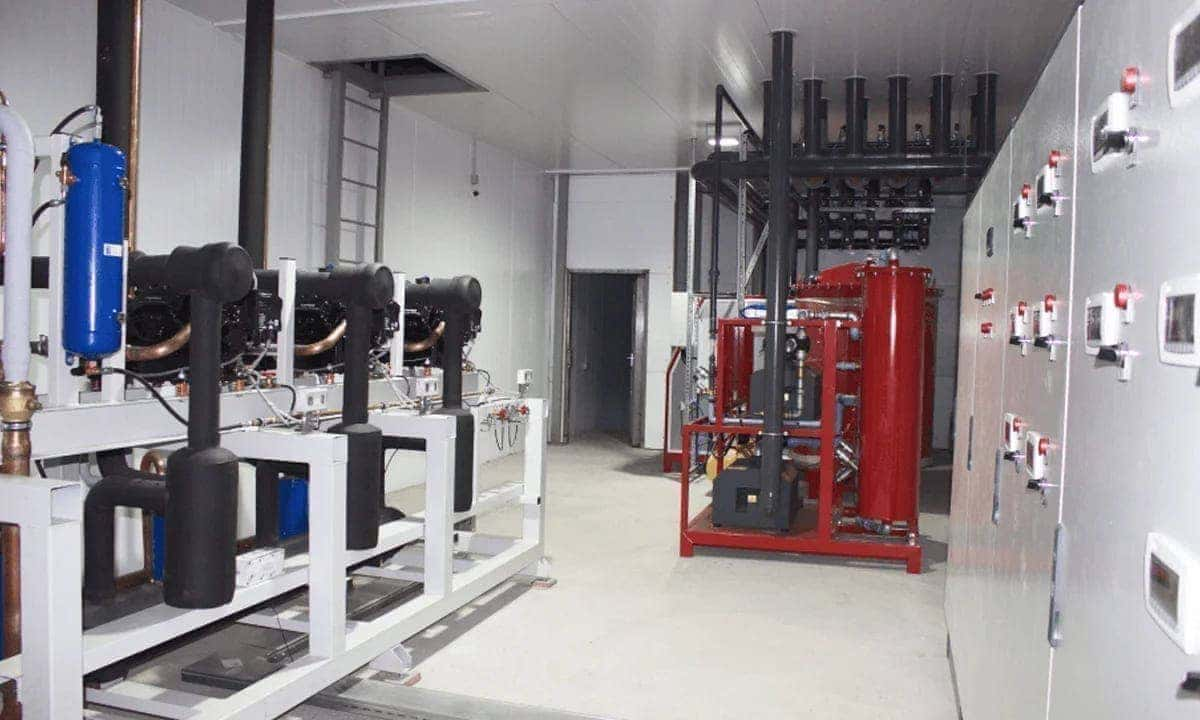CO2 REFRIGERATION EQUIPMENT
BMSERVICE specializes in providing efficient and innovative refrigeration solutions for various branches of the food industry, including vegetable and fruit storages, meat and fish processing plants, dairies, bakeries and confectionery factories.
We are at the forefront of technological progress and have already achieved significant success in implementing CO2 systems at our production facilities. These systems provide significant energy savings, in some cases achieving a 25-40% reduction in energy consumption.


The characteristics of CO2 systems for different cycles are as follows.
≫ Transcritical CO2 system
Occurs in both the supercritical and subcritical fields Pressure range is from 70 to 120 bar or more.
≫ Subcritical CO2 system
Pressure range is from 10 to 65 bar. Similar conditions to traditional refrigeration systems. Common components can be used.
Cascade refrigeration units on CO2
Carbon dioxide (CO2) is a natural substance. It does not destroy the ozone layer, which makes it a more environmentally friendly alternative to freon, the use of which is limited by the Kyoto Protocol. Being aware of its advantages, leading European manufacturers have developed compressors and components specifically for CO2 refrigeration systems. Carbon dioxide refrigeration systems are characterized by high efficiency, which exceeds the indicators of freon and ammonia systems in the low-temperature part. Typically, CO2 plants operate in precritical or transcritical cycles, depending on the desired performance, and use cascade or single-stage circuits.

CO2 refrigeration equipment
Our company specializes in the field of refrigeration with CO2. We have successful experience in the implementation and maintenance of CO2 refrigeration systems. Contact us and we will implement your project efficiently and reliably. We will also provide timely service and connect the equipment to remote monitoring.
Cooperating with us, you can take advantage of professionally prepared projects that provide a number of benefits:
≫ qualified selection of the optimal technological solution;
≫ increasing food security;
≫ reduction of costs and losses of goods during storage;
≫ increasing the competitiveness of products;
≫ increase in profits;
≫ reduction of energy costs for storage and processing;
≫ reliability and durability of refrigeration equipment.










